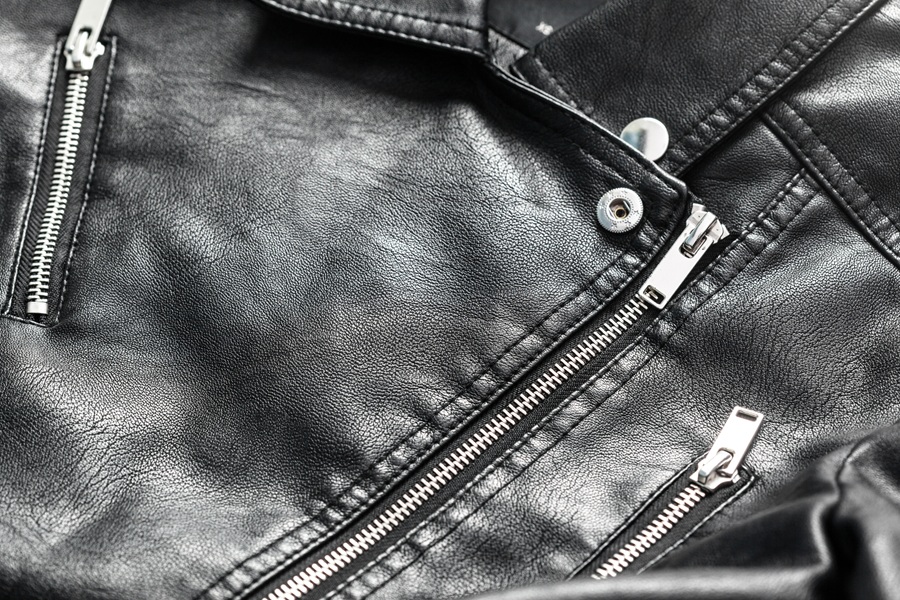
Apart from cleaning, conditioning is another part of a proper leather care routine. But unlike dusting or wiping, it isn’t something to do automatically. Some experts insist on conditioning after every cleaning, while others see it as an occasional step. No wonder people get confused about what’s best.
Instead of treating conditioning as a blanket rule, it helps to look at the context. Different types of cleaning and wear call for individual approaches. In this post, let's sort the situations when conditioning is essential and when you can safely skip it.
Deep cleaning alone is only half the equation. Leather thrives on balance: remove dirt and residue, then restore nourishment. Conditioning ensures the jacket doesn’t just look refreshed but also stays resilient beneath the surface. Together, the two steps create complete care.
These are the main ways conditioning protects leather after a deep cleaning:
Even when you use gentle leather cleaners, they don’t just remove surface dirt and sweat. These cleaners also pull out the natural oils that keep the hide flexible and nourished. Without those oils, the fibers weaken, which is why conditioning becomes a critical next step.
When leather loses its oils, it dries out and hardens, which eventually leads to cracks forming along seams and folds. These cracks are not just cosmetic; they compromise the strength of the jacket and are often irreversible. Conditioning immediately after cleaning locks in moisture and prevents this kind of long-term damage.
A leather jacket should feel soft and stretchy when you wear it, moving with your body instead of resisting it. Deep cleaning leaves it stripped and tight, but conditioning restores that smooth, flexible texture. This makes the jacket comfortable again while also protecting the fibers from stress caused by rigidity.
By always pairing deep cleaning with conditioning, you maintain balance – clean surfaces with healthy, nourished fibers underneath.
Not every cleaning session is intense enough to warrant conditioning. Quick dusting or spot cleanups don’t draw out the natural oils in the same way a deep cleaning does. Conditioning after every minor wipe-down can actually backfire, oversaturating the leather and making it greasy.
Using a soft horsehair brush or cloth to remove surface-level dust has no impact on the leather’s natural oils. This is one of the most common forms of routine upkeep, and conditioning afterward is unnecessary. It’s simply about keeping the jacket clean between heavier uses.
If you blot away a spill with a damp cloth or treat a tiny stain, you haven’t stripped the fibers of their oils. This kind of targeted cleaning addresses the problem without affecting the leather over all, so reconditioning immediately afterward isn’t required.
Some owners like to give their jacket a quick wipe-down every few days. If you condition each time, you’ll eventually oversaturate the hide, making it sticky and more likely to attract dirt. Instead, save conditioning for times when the jacket undergoes a meaningful cleaning.
The goal is balance: condition after thorough cleanings, but let your jacket “breathe” in between.
Leather naturally loses moisture with time, whether you wear the jacket daily or leave it stored away. That’s why conditioning should still happen on a set schedule, even if you haven’t had it cleaned. Proactive conditioning keeps fibers from drying out and gives you a layer of protection before damage shows up.
Here’s a practical table to help you set a conditioning schedule based on use and environment:
| Usage/Condition | Cleaning Frequency | Conditioning Frequency | Notes |
|---|---|---|---|
| Everyday Wear (urban use) | Every 2–3 months | Every 6 months | Maintain balance between cleaning grime and keeping oils replenished. |
| Occasional Wear (special events) | Once a year or as needed | Every 12 months | Even if stored, leather still dries with time. |
| Harsh/Outdoor Use | Every 1–2 months | Every 3–4 months | Extra conditioning needed due to exposure to dust, rain, or sun. |
| Stored in Proper Conditions | Spot clean as needed | Every 12 months | Condition before and after storage to keep fibers healthy. |
| Vintage or Delicate Leather | Minimal cleaning unless required | Every 3 months with light balm | Requires gentler, more frequent conditioning to prevent brittleness. |
This schedule works as a general baseline, but you should always adjust based on your climate and the feel of your jacket.
A jacket worn in Arizona or Minnesota won’t age the same way as one kept in coastal California. The environment makes that much of a difference. When conditions are severe, the leather’s natural oils vanish quickly, leaving the material at risk. Adjusting your routine is the only way to keep it supple and prevent premature damage.
Desert-like air is extremely dry, which accelerates the evaporation of oils from leather fibers. Jackets in these conditions should be conditioned every three to four months to counter the natural drying effect.
In colder climates, heaters keep us comfortable but wreak havoc on leather. Prolonged exposure to heated air strips moisture from the hide, making it dry and brittle. More frequent conditioning during winter months offsets this problem.
Jackets worn often in bright, sunny environments are at risk of fading and fiber weakening caused by UV rays. Conditioning not only restores oils but also provides a protective layer that minimizes sun-related damage. By paying attention to the environment, you can adjust your conditioning routine and keep leather strong and supple year round.
No schedule or rulebook is as reliable as the jacket itself. Leather communicates through touch and appearance, and when it starts to feel off, that’s your signal. The best care comes from noticing these changes early. Conditioning right away is how you keep small issues from becoming permanent.
If your jacket feels rough, brittle, or unusually rigid, that’s a sign the fibers are drying out. Leather should feel smooth and supple; anything less means it needs immediate conditioning.
Cracks, dull spots, or loss of sheen are visible signals oils have disappeared from the fibers. At this stage, conditioning revives the finish and helps prevent those cracks from deepening into permanent tears.
Dry leather often loses its richness of tone, looking faded or washed out. Conditioning restores depth of color and vibrancy, bringing your jacket closer to its original appearance.
If you can see or feel dryness, don’t wait until your next scheduled maintenance; condition right away. Timely action will stop issues from worsening and help your jacket age gracefully.

Don’t let your leather age before its time – revitalize it with the trusted expertise of Julian’s Dry Cleaners. For more than 60 years, we’ve been Rochester’s go-to specialists in garment care, also offering Professional Leather Cleaning Service in Rochester, New York. We combine eco-friendly products, careful handling, and meticulous quality control to restore jackets to their best condition.
Our specialized leather cleaning and conditioning system protects against cracking, fading, and stiffness while keeping your investment supple and stylish. We also offer FREE Pickup and Delivery Service for added convenience.
Get in Touch with Us Today
📍 1964 East Ridge Road, Rochester, NY, 14622
✉️ info@juliansdrycleaners.com
Call today and discover how Julian’s Dry Cleaners can bring new life to your leather because true quality never goes out of style.